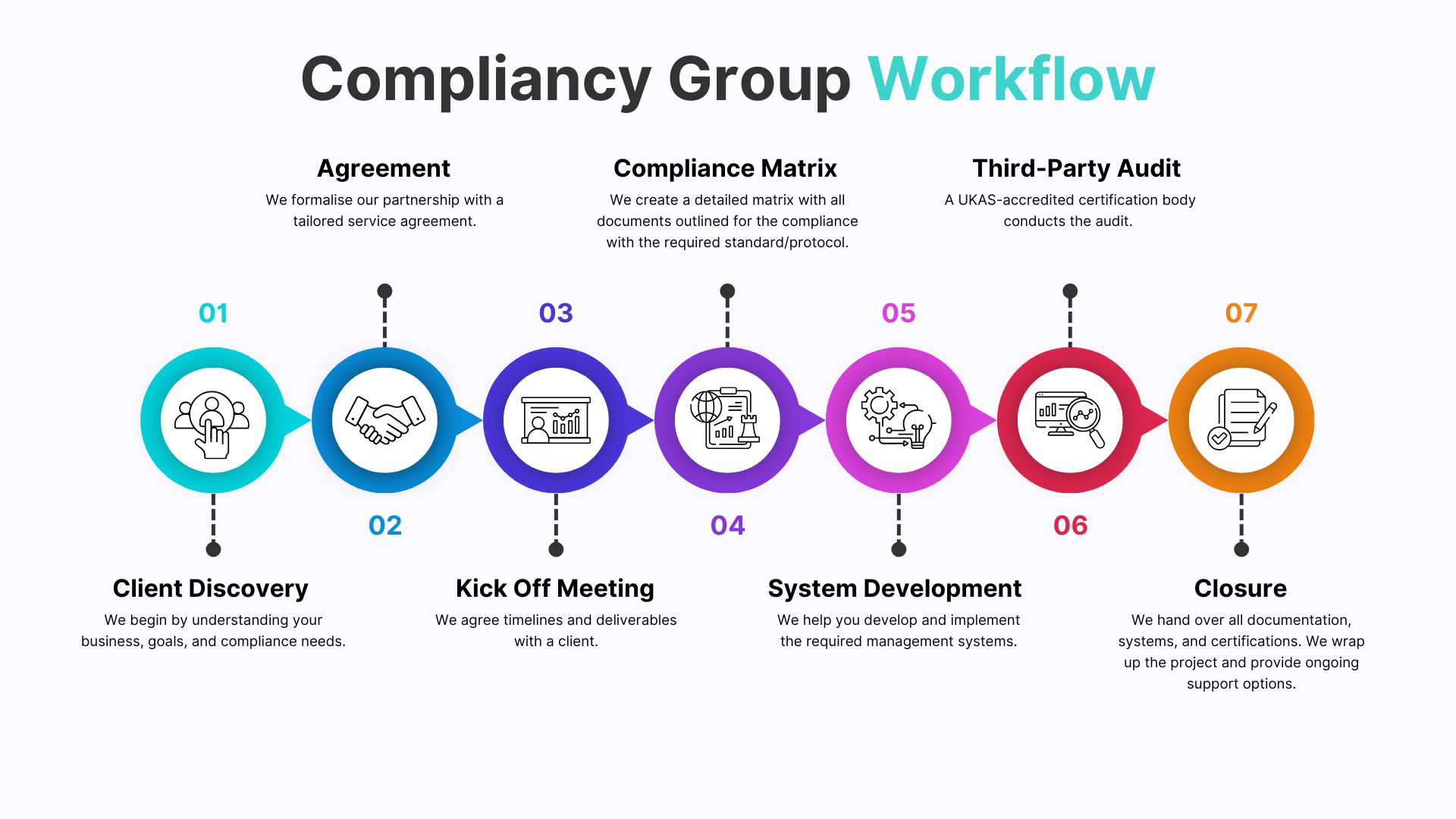We're Here To
Help
A Lone Worker Risk Assessment is a targeted inspection designed to identify, evaluate, and control the unique risks faced by employees working alone or in isolated environments. Completing a lone worker assessment demonstrates your business’s commitment to health and safety, legal compliance, and proactive risk management – trusted by clients, partners, and regulators across all sectors. With robust lone worker management, you protect your staff, reduce the risk of incidents, and show you take your duty of care seriously. Compliancy Group guides you through every step – making lone worker safety compliance clear, practical, and a genuine business advantage.
We understand the specific challenges of lone working and the current legal landscape. Our team brings hands-on experience with lone worker risk assessments, control measures, and industry best practice.
No one-size-fits-all here. Whether you need an initial assessment, policy development, staff training, or ongoing compliance advice, our services are fully customised to your operations. We offer flexible support packages—from essential guidance to comprehensive on-site consultancy.
We work exclusively with UKAS-accredited certification bodies and maintain a 100% pass rate for compliance assessments. Our clients trust us to deliver results that stand up to audit and regulatory scrutiny—helping you achieve, maintain, and leverage lone worker compliance for business growth.
Compliance shouldn’t slow you down. We help you build safer environments, reduce risk, and improve operational efficiency—so you can focus on your core business.
You’ll work directly with our expert team, including leadership involvement from our CEO. We pride ourselves on responsive communication, clear guidance, and ongoing support throughout your compliance journey.
Demonstrate compliance to secure contracts and reassure clients, staff, and regulators.
Show your commitment to workforce safety, wellbeing, and legal responsibilities.
Minimise the risk of accidents, injuries, or emergencies for lone workers.
Enhance your standing as a responsible and trusted employer.
Regular assessments and compliance checks foster a culture of ongoing safety and operational excellence.
Strengthen Reputation
From initial assessment to ongoing support, our team ensures you’re always prepared and confident.
We streamline compliance processes, freeing up your team to focus on core business activities.
Services are tailored to your specific business needs, not generic templates.
Ongoing support, training, and regulatory updates keep your business compliant long after inspection.
Our 100% compliance pass rate and exclusive partnerships with UKAS-accredited bodies mean you’re in safe hands.

As an employer, you must manage any health and safety risks before people can work alone. This applies to anyone contracted to work for you, including self-employed people.
5 HSE Lone Working Risk Assessment Steps 1.Step 1: Identify Hazards. The first stage is identifying anything associated with the job that could pose a hazard. 2.Step 2: Assess the Risks. ... 3.Step 3: Control the Risks. ... 4.Step 4: Record Your Findings. ... 5.Step 5: Review Efficacy.
BS 8484 provides best industrial guidance for safety and security for employees. BS 8484 gives recommendations for the provision of safety and security for employees in a lone working scenario where the customer's risk profile identifies the need for an LWS
It is the policy of the HSE to ensure the safety of lone workers by minimising the related risk and putting in place appropriate measures to improve their safety. The purpose of this policy is to raise awareness of the risks presented by lone working to managers and employees
The three main risk categories for lone working are: people, environment, and task-based risks. These categories help employers assess and manage the specific hazards associated with employees working alone
Certain high-risk activities are not suitable for lone workers due to increased safety risks. These include working in confined spaces, near exposed live electricity conductors, diving operations, and working with explosives or fumigation. Additionally, tasks requiring multiple people, heavy manual handling, or involving unpredictable individuals should also be avoided by lone workers.
A lone worker safety policy is a set of guidelines and procedures designed to protect employees who work alone or in isolated conditions. It outlines the measures an organization will take to minimize risks and ensure lone workers can safely perform their duties. This policy is crucial for establishing clear protocols and support systems for lone workers, promoting a strong health and safety culture, and mitigating potential reputational damage from incidents.
A lone worker risk assessment is a process used to identify and evaluate potential hazards and risks that a person working alone may face, particularly when they lack close or direct supervision. This assessment helps employers understand the specific dangers associated with lone working and establish control measures to mitigate those risks.
In addition, the Management of Health and Safety at Work Regulations state every employer should make a “suitable and sufficient” assessment of the risks to the health and safety of their employees. This includes lone workers and those who spend part of their time working alone.